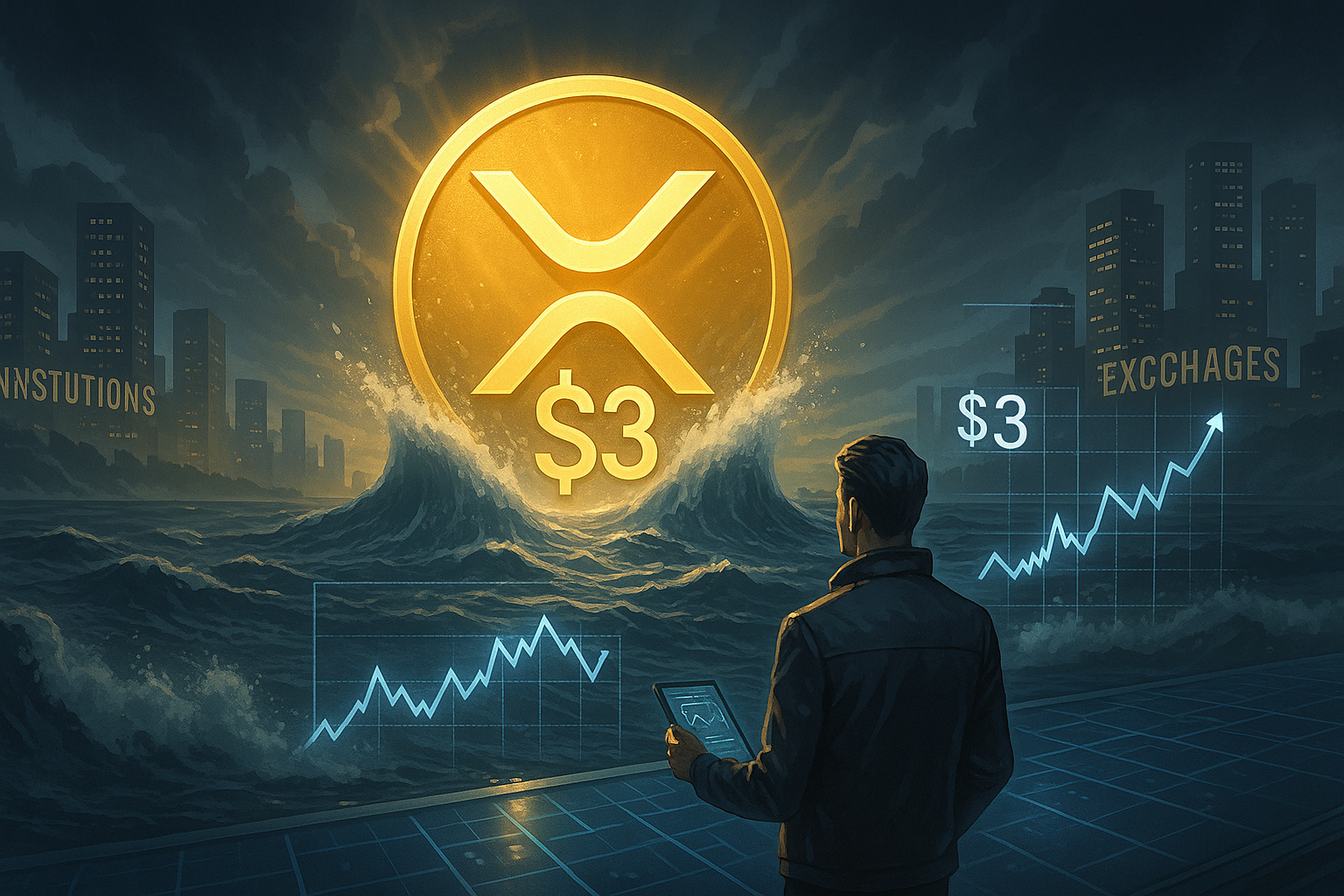XRP Is Quietly Building Momentum
While most eyes have been glued to Bitcoin and Ethereum’s record-breaking runs, XRP has been biding its time. After months of sideways movement and occasional dips below the $0.50 mark earlier this year, XRP is again seeing a steady uptrend, and the sentiment surrounding its long-term trajectory is turning distinctly bullish.
Analysts are starting to argue that XRP’s time below $3 may be short-lived, and for good reason. With growing institutional adoption, potential exchange-traded fund (ETF) catalysts, and the long-awaited expansion of Ripple’s utility ecosystem, XRP appears positioned to reclaim higher ground.
1. Institutional Demand Is Quietly Growing
Institutional capital flows have always been a major catalyst for sustained rallies, and XRP is beginning to attract more serious attention. Despite its regulatory hurdles in recent years, the legal clarity Ripple secured through its partial court victories has reopened doors that had long been closed.
Regulatory Clarity Changes Everything
When a U.S. court ruled that secondary sales of XRP do not constitute securities transactions, the decision effectively removed one of the biggest clouds hanging over the asset. Institutional investors, previously wary of compliance issues, now have a clearer path to re-engage.
This clarity has already sparked renewed inflows from hedge funds, liquidity providers, and asset managers looking to diversify their digital-asset portfolios. Ripple’s transparent operations, banking partnerships, and long-term compliance efforts are turning XRP into a more comfortable bet for professional investors.
Global Payment Corridors Are Expanding
Ripple’s On-Demand Liquidity (ODL) solution leveraging XRP for cross-border settlements is now active in over 70 countries. From South America to Southeast Asia, banks and fintechs are embracing the system to lower remittance costs and improve settlement speed.
This growing utility translates into steady underlying demand for XRP, ensuring that market moves are not just speculative but backed by real-world usage.
2. Ripple’s Utility Ecosystem Is Strengthening
Unlike many digital assets that thrive purely on hype or speculation, XRP’s core value proposition of fast, low-cost, cross-border transfers remains its strongest foundation. But Ripple is not stopping there; its roadmap extends well beyond payments.
Tokenization and CBDC Integration
Ripple is actively developing frameworks for central bank digital currencies (CBDCs) and tokenized asset platforms. Several pilot projects with governments and financial institutions are underway, demonstrating how XRP Ledger (XRPL) can support stablecoins, CBDCs, and asset tokenization at scale.
This diversification of use cases creates long-term demand drivers for XRP beyond simple remittances. As more central banks explore digital currency issuance, Ripple’s infrastructure may become essential to interoperability, a crucial advantage over purely speculative coins.
Developer and Ecosystem Expansion
XRPL continues to attract developers focused on building decentralized exchanges (DEXs), NFT platforms, and financial applications. With the recent implementation of AMM (Automated Market Maker) features and hooks for smart contract-like functionality, the network’s versatility is expanding.
Every new use case drives on-chain activity, reinforcing the narrative that XRP is transitioning from a single-purpose payments token to a multifunctional asset for enterprise finance.
3. ETF Speculation and Broader Market Tailwinds
The biggest potential near-term catalyst for XRP lies in the same wave that lifted Bitcoin and Ethereum: spot ETF speculation. While the SEC has yet to signal concrete approval for an XRP ETF, Ripple’s legal clarity and established banking partnerships make it a plausible candidate down the line.
Why an XRP ETF Would Matter
An ETF would bring institutional-grade exposure and legitimacy to XRP, attracting pension funds, hedge funds, and retail investors who prefer regulated, custodial access. Even rumors of ETF filings can generate speculative demand, as seen with Bitcoin in 2024.
With major asset managers now comfortable with token-based products, it’s likely only a matter of time before XRP enters the conversation. If that happens, liquidity and price momentum could accelerate dramatically.
Macro Market Sentiment Favors Altcoins
Beyond ETF buzz, macroeconomic conditions are increasingly favorable for risk assets. With global inflation easing and interest rate cuts expected in key markets, liquidity is flowing back into crypto.
Altcoins historically perform strongly in the months following Bitcoin’s major surges, and XRP, with its relatively undervalued market cap and strong fundamentals, could become a prime beneficiary.
Key Resistance and Support Levels
Technical analysts are watching several important price zones:
$0.85 – $0.90: A key resistance range XRP must break decisively to regain momentum.
$1.20 – $1.50: The next resistance cluster, representing the pre-2022 trading ceiling.
$2.00 – $3.00: The major psychological barrier. A successful breakout could signal the beginning of a full bullish phase.
Strong support remains near $0.65, where long-term holders have consistently accumulated.
If volume continues rising in tandem with institutional inflows and network growth, XRP could soon test its previous all-time highs.
The Long-Term Outlook
For years, XRP’s price was suppressed by legal uncertainty and a lack of institutional traction. Today, those barriers are dissolving. Ripple’s expansion into tokenization, CBDCs, and global liquidity solutions places XRP at the crossroads of traditional finance and decentralized infrastructure.
Moreover, the asset’s market positioning is unique: it bridges regulated institutions and open blockchain networks, a balance few competitors can claim.
The combination of legal clarity, expanding utility, and the possibility of regulated investment products paints a bullish mid- to long-term picture. If momentum continues through Q4, analysts expect XRP to test the $2–$3 range, setting the stage for a full market recovery.
Conclusion
XRP’s time below $3 may be nearing its end. The ingredients for a breakout are aligning institutional adoption, ecosystem expansion, and ETF speculation. Each factor supports the other, building a feedback loop of confidence and capital inflows.
As Ripple continues to embed itself in global finance and XRP finds renewed traction as both a liquidity and utility asset, the market may soon rediscover the enthusiasm it once had for this veteran cryptocurrency.
Whether it takes weeks or months, XRP appears ready to reclaim its place among the digital asset elite.

